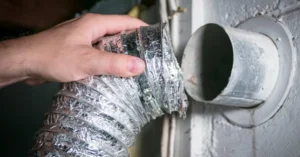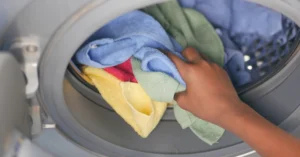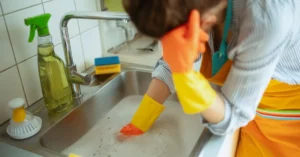You wake up to the sound of dripping water. Following the noise, you discover a small puddle forming under your bathroom sink. It’s a scenario no San Diego homeowner wants to face, yet pipe leaks remain one of the most common plumbing emergencies across Southern California.
Unlike other regions with freezing temperatures, San Diego’s pipe leaks stem from unique local factors that many homeowners don’t fully understand. After 20 years serving homes throughout San Diego County, we’ve identified the specific causes and prevention strategies that work in our distinctive environment.
In this article, you’ll discover why pipes leak in Southern California’s unique conditions, how to identify early warning signs, and most importantly, practical prevention strategies that can save you thousands in water damage and repairs.
The Surprising Causes of Pipe Leaks in San Diego Homes
When most Americans think about pipe leaks, they imagine frozen pipes bursting during harsh winters. But here in Southern California, our pipe challenges come from very different sources:
Water Chemistry and Mineral Content
San Diego’s water supply contains high levels of minerals and dissolved solids that create unique challenges for your plumbing system.
Our local water, particularly in inland areas like Santee, El Cajon, and Poway, contains significant calcium and magnesium. These minerals accumulate inside pipes over time, creating:
-
Restricted water flow
-
Increased pressure on pipe walls
-
Accelerated corrosion at joints and connections
-
Pinhole leaks in copper piping
This mineral buildup is especially problematic in homes built between the 1970s and early 2000s, where copper piping was the standard installation material.
Soil Movement and Seismic Activity
Southern California’s active geology creates constant subtle movement that stresses your plumbing system.
Even minor seismic events that you barely notice can shift the ground beneath your home, placing stress on rigid plumbing connections. Over time, this leads to:
-
Loosened pipe joints
-
Cracked pipe sections
-
Failed seals at connection points
-
Stress fractures in older pipes
In hillside communities like La Jolla, Del Cerro, and Point Loma, these effects are amplified by natural soil settlement and erosion patterns.
Coastal Corrosion Factors
Homes near San Diego’s coastline face accelerated pipe deterioration from environmental factors.
The salt-laden air in coastal communities like Oceanside, Carlsbad, and Coronado creates a corrosive environment that affects:
-
Exposed metal pipes
-
Outdoor plumbing fixtures
-
Pipe hangers and supports
-
Connection points where dissimilar metals meet
This corrosion weakens pipes over time, making them more vulnerable to leaks and failures, particularly in older homes with original plumbing systems.
Pressure Fluctuations Unique to Our Region
San Diego’s varied topography creates significant water pressure challenges across different neighborhoods.
Homes in higher elevations like Rancho Bernardo, Scripps Ranch, or San Carlos often experience higher water pressure as municipal systems must pump water uphill. This increased pressure:
-
Stresses pipe connections
-
Accelerates wear on valves and fixtures
-
Creates water hammer effects that damage pipes over time
-
Finds the weakest points in your plumbing system
Without proper pressure regulation, these homes face significantly higher risks of pipe failures.
The Hidden Dangers of Ignoring Small Leaks
That tiny drip under your sink might seem insignificant, but small leaks in San Diego homes can quickly escalate into major problems.
Water Damage Progression in Southern California Homes
The progression from minor leak to major damage happens faster in our region due to:
-
Our housing construction methods (slab foundations, drywall construction)
-
The prevalence of open floor plans in modern San Diego homes
-
Limited crawl spaces that make leaks harder to detect
-
The high value of San Diego real estate, making even minor damage costly
A leak that might be merely annoying in other regions can cause thousands in damage here, particularly in higher-value coastal properties.
Mold and Mildew Concerns
San Diego’s climate creates ideal conditions for mold growth when leaks occur.
Our moderate temperatures and coastal humidity mean that moisture from leaks can support mold growth year-round. This is particularly concerning because:
-
Many San Diego homes lack adequate ventilation systems
-
Open floor plans allow mold spores to spread more widely
-
Our indoor-outdoor lifestyle means doors and windows are often open
-
Many homes have been renovated multiple times, creating hidden spaces where mold can thrive
Water Conservation and Cost Implications
In a region where water conservation is essential, leaks represent both an environmental and financial burden.
San Diego has some of the highest water rates in the country, making even small leaks expensive over time. A single leaking toilet can waste up to 200 gallons per day, while a dripping faucet might waste 3,000 gallons per year.
With tiered water pricing structures in most San Diego communities, these leaks can push you into higher rate brackets, compounding the financial impact.
Warning Signs Your San Diego Home Has Hidden Pipe Leaks
Catching leaks early is crucial for preventing extensive damage. Here are the key warning signs to watch for in Southern California homes:
Unexplained Increases in Water Bills
Your water bill can be your first indicator of hidden leaks in your plumbing system.
Review your water bills regularly and look for:
-
Gradual increases that can’t be explained by seasonal usage
-
Sudden spikes without corresponding changes in household habits
-
Consistently higher usage than similar households in your neighborhood
San Diego water authorities typically provide usage comparisons on your bill, making it easier to spot abnormal consumption patterns.
Reduced Water Pressure in Specific Fixtures
Changes in water pressure often signal developing leak problems.
Pay attention to:
-
Showers that don’t provide the same pressure they once did
-
Sinks where water flow has diminished
-
Outdoor spigots with weakening pressure
-
Appliances taking longer to fill with water
These pressure changes often indicate leaks in the supply lines feeding those specific fixtures or areas of your home.
Damp or Discolored Spots on Walls, Ceilings, or Floors
Visual evidence of moisture is a clear warning sign that shouldn’t be ignored.
In San Diego homes, watch for:
-
Bubbling or peeling paint
-
Water stains on ceilings, particularly under bathrooms
-
Warping or buckling of hardwood floors
-
Damp spots on carpeting
-
Efflorescence (white mineral deposits) on concrete slabs or walls
These visual cues often appear well after a leak has begun, indicating that water damage is already occurring.
Musty Odors or Visible Mold
Moisture from leaks creates ideal conditions for mold growth in our climate.
Be alert for:
-
Musty smells, particularly in bathrooms, kitchens, or laundry areas
-
Visible mold growth, especially in corners or along baseboards
-
Increased allergy symptoms when in certain areas of your home
-
Black or green spots appearing on walls or ceilings
These signs indicate that moisture has been present long enough for mold to establish itself—a clear warning that a leak has been active for some time.
Sounds of Running Water When No Fixtures Are In Use
Your ears can be valuable leak detectors in your San Diego home.
Listen for:
-
The sound of running water when all fixtures are turned off
-
Dripping noises inside walls
-
Gurgling sounds from drains
-
Toilet tanks that randomly refill without being flushed
These auditory clues often indicate leaks that haven’t yet created visible damage but are actively wasting water.
The Most Vulnerable Plumbing Areas in San Diego Homes
Certain parts of your plumbing system are particularly prone to leaks in our region. Understanding these vulnerability points helps you monitor the right areas.
Outdoor Irrigation Systems
San Diego’s landscape irrigation systems are frequent sources of undetected leaks.
Our region’s irrigation systems face unique challenges:
-
Exposure to intense UV radiation that degrades pipes and components
-
Dramatic temperature fluctuations between day and night
-
Root intrusion from drought-resistant plants with aggressive root systems
-
Soil movement during rare but intense rain events
Regular inspection of sprinkler heads, drip lines, and control valves can prevent significant water waste and property damage.
Water Heater Connections
Water heaters in San Diego homes face specific stresses that can lead to leaks.
Our region’s hard water creates sediment buildup that:
-
Reduces water heater efficiency
-
Creates hotspots that damage tank linings
-
Accelerates corrosion at connection points
-
Increases pressure within the system
Additionally, many San Diego homes have water heaters installed in garages or outdoor closets where temperature fluctuations place additional stress on connections.
Under-Slab Plumbing
Homes built on concrete slabs (common throughout San Diego County) face unique leak challenges.
When pipes embedded in or under concrete slabs leak:
-
Detection is difficult until significant damage occurs
-
Repairs are more complex and expensive
-
Water can travel significant distances before becoming visible
-
Foundation damage may result from soil erosion
These leaks often manifest as warm spots on your floor, the sound of running water when no fixtures are in use, or unexplained increases in water bills.
Pipe Joints and Connections
The points where pipes connect are consistently the most vulnerable to leaks in any plumbing system.
In San Diego homes, these connection points face additional stresses from:
-
Seismic activity that creates subtle movement
-
Thermal expansion and contraction from our temperature swings
-
Water pressure fluctuations common in hillside neighborhoods
-
Corrosion acceleration in coastal areas
Professional plumbers pay special attention to these connection points during inspections, as they’re often the first places where problems develop.
Preventative Strategies for San Diego’s Unique Plumbing Challenges
Now that you understand why pipes leak in Southern California, let’s explore the most effective prevention strategies for our region.
Water Pressure Regulation
Controlling water pressure is essential for preventing leaks in San Diego homes.
Ideal water pressure for residential plumbing is between 40-60 PSI, but many San Diego neighborhoods receive municipal water at much higher pressures. Installing a pressure regulator:
-
Reduces stress on your entire plumbing system
-
Extends the life of appliances and fixtures
-
Prevents water hammer effects that damage pipes
-
Reduces the likelihood of leaks at connection points
This simple device, installed at your main water line, provides immediate protection and typically pays for itself within a year through reduced leak risks.
Water Softening and Filtration
Addressing San Diego’s hard water can significantly reduce pipe corrosion and leaks.
Water treatment options include:
-
Whole-house water softeners that remove minerals before they enter your plumbing
-
Point-of-use filters for specific appliances or fixtures
-
Scale inhibitors that prevent mineral buildup without removing beneficial minerals
-
Regular descaling treatments for appliances and fixtures
These systems are particularly valuable in areas with the hardest water, such as Rancho Bernardo, Poway, and eastern San Diego County.
Strategic Pipe Material Selection
When replacing pipes or repiping your San Diego home, material selection matters significantly.
Different pipe materials perform better in specific San Diego environments:
-
PEX piping offers excellent flexibility for seismic movement and resists corrosion
-
CPVC provides good performance in hot water applications and resists chemical damage
-
Copper with proper insulation still performs well in many applications
-
Stainless steel offers superior corrosion resistance for coastal properties
Working with a plumber who understands local conditions ensures you select the right materials for your specific neighborhood and water conditions.
Regular Professional Inspections
Preventative inspections are particularly valuable in Southern California’s unique environment.
A professional plumbing inspection should include:
-
Pressure testing to identify developing leaks before they become visible
-
Video inspection of sewer lines to catch root intrusion early
-
Thermal imaging to detect hidden leaks in walls or under slabs
-
Water quality testing to identify corrosive conditions
For most San Diego homes, an annual inspection provides the right balance of protection without unnecessary expense.
DIY Leak Detection Methods for San Diego Homeowners
Between professional inspections, these simple DIY checks can help you catch developing problems early.
The Meter Test: A Simple But Effective Approach
Your water meter can be your best tool for detecting hidden leaks.
To perform a basic meter test:
-
Turn off all water-using appliances and fixtures in your home
-
Locate your water meter (typically near the street in a concrete box)
-
Note the exact reading or watch for movement in the leak indicator (usually a small triangle or dial)
-
Wait 30 minutes without using any water
-
Check the meter again
Any movement indicates a leak somewhere in your system. This test is particularly valuable during San Diego’s dry months when outdoor irrigation might mask leak indicators.
Toilet Leak Detection
Toilets are among the most common sources of leaks in San Diego homes.
To check for toilet leaks:
-
Remove the tank lid
-
Add several drops of food coloring to the tank water
-
Wait 15-20 minutes without flushing
-
Check the bowl for color
If color appears in the bowl without flushing, you have a leak that could be wasting thousands of gallons annually. This test is especially important in older San Diego homes with original fixtures.
Visual Inspection of Accessible Plumbing
Regular visual checks of exposed pipes can catch problems before they escalate.
Focus your attention on:
-
Under-sink plumbing in kitchens and bathrooms
-
Connections to appliances like dishwashers and washing machines
-
Water heater fittings and valves
-
Outdoor hose bibs and irrigation system components
Look for corrosion, mineral deposits, or moisture on or around these components, which often indicate developing problems.
Smart Water Monitoring
New technology offers San Diego homeowners powerful leak detection capabilities.
Smart water monitors can:
-
Alert you to unusual water usage patterns
-
Automatically shut off water when a leak is detected
-
Track real-time water consumption and help you identify leaks faster
These systems can be especially helpful for busy homeowners who might not always notice the signs of a developing leak right away.
Proactive Prevention Pays Off in San Diego
Pipe leaks may seem like a minor nuisance at first, but in San Diego’s climate and housing market, even small plumbing issues can lead to major consequences. From mineral-rich water to seismic activity and coastal corrosion, Southern California homes face a distinct set of challenges that demand a proactive approach.
By understanding the local causes of pipe leaks, learning to spot early warning signs, and implementing smart prevention strategies, you can protect your home, conserve water, and avoid expensive emergency repairs.
If you suspect a hidden leak, notice signs of water damage, or just want peace of mind, Solid Plumbing & Drains Inc. is here to help. Our licensed experts know exactly how to navigate San Diego’s unique plumbing challenges—and we offer fast, friendly, and professional service you can count on.




